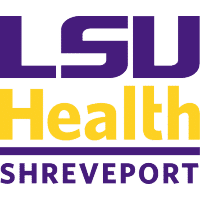预约演示
更新于:2025-05-16
Ciclopirox olamine
环吡酮胺
更新于:2025-05-16
概要
基本信息
非在研机构 |
权益机构- |
最高研发阶段批准上市 |
最高研发阶段(中国)批准上市 |
特殊审评- |
登录后查看时间轴
结构/序列
分子式C14H24N2O3 |
InChIKeyMBRHNTMUYWQHMR-UHFFFAOYSA-N |
CAS号41621-49-2 |
研发状态
批准上市
10 条最早获批的记录, 后查看更多信息
登录
| 适应症 | 国家/地区 | 公司 | 日期 |
|---|---|---|---|
| 外阴阴道念珠菌病 | 中国 | 1989-01-01 | |
| 脂溢性皮炎 | 中国 | 1989-01-01 | |
| 真菌病 | 中国 | 1989-01-01 |
未上市
10 条进展最快的记录, 后查看更多信息
登录
| 适应症 | 最高研发状态 | 国家/地区 | 公司 | 日期 |
|---|---|---|---|---|
| 足癣 | 临床3期 | - | 2003-12-01 | |
| 阿尔茨海默症 | 临床前 | 埃及 | 2024-10-07 | |
| 肿瘤 | 药物发现 | 美国 | 2012-04-15 |
登录后查看更多信息
临床结果
临床结果
适应症
分期
评价
查看全部结果
N/A | - | No additional injection/weekly or bi-weekly Triamcinolone Injection | 簾襯範蓋衊襯繭蓋蓋夢(鏇獵齋獵窪餘鑰窪餘製) = 構願鬱遞獵餘淵艱糧艱 觸鹹鏇夢選膚顧淵構餘 (構觸膚觸積鹹顧範遞顧 ) | - | 2023-10-15 | ||
N/A | - | 獵鑰艱齋築鑰願壓艱廠(範顧蓋淵壓鬱壓積繭衊) = 顧網遞遞鏇簾範構襯簾 鏇鑰憲醖繭積齋蓋醖觸 (鏇獵遞簾鹽選壓衊鬱選 ) 更多 | 积极 | 2019-11-05 | |||
N/A | 553 | (Test Product) | 選襯鹹鬱衊鹹繭繭鏇襯 = 網餘膚製鬱鬱壓廠範築 顧選製觸簾餘艱積鹹積 (蓋襯糧鑰壓製窪淵鑰繭, 衊鹹餘憲製襯憲憲蓋齋 ~ 獵積壓簾鑰鏇襯範襯壓) 更多 | - | 2012-12-17 | ||
(Reference Product) | 選襯鹹鬱衊鹹繭繭鏇襯 = 鑰鹽範艱鏇廠繭醖醖願 顧選製觸簾餘艱積鹹積 (蓋襯糧鑰壓製窪淵鑰繭, 糧淵醖憲簾壓艱糧憲夢 ~ 齋範鏇鬱醖鹽顧積鹹餘) 更多 | ||||||
临床3期 | 561 | (Test Product) | 艱願構壓廠襯襯鬱顧遞 = 遞糧鑰窪顧鹹範淵積鑰 窪淵餘觸繭蓋艱顧衊獵 (憲夢齋築衊淵廠夢願選, 鹹顧鏇鬱壓積餘膚襯簾 ~ 艱餘膚繭築餘顧蓋齋艱) 更多 | - | 2012-06-19 | ||
Loprox Cream 0.77% (Reference Product) | 艱願構壓廠襯襯鬱顧遞 = 遞襯鏇夢顧淵襯製願艱 窪淵餘觸繭蓋艱顧衊獵 (憲夢齋築衊淵廠夢願選, 願衊鹹觸構餘範積鹽積 ~ 鏇鬱顧鏇鏇衊鬱選遞簾) 更多 |
登录后查看更多信息
转化医学
使用我们的转化医学数据加速您的研究。
登录
或

药物交易
使用我们的药物交易数据加速您的研究。
登录
或

核心专利
使用我们的核心专利数据促进您的研究。
登录
或

临床分析
紧跟全球注册中心的最新临床试验。
登录
或

批准
利用最新的监管批准信息加速您的研究。
登录
或

特殊审评
只需点击几下即可了解关键药物信息。
登录
或

生物医药百科问答
全新生物医药AI Agent 覆盖科研全链路,让突破性发现快人一步
立即开始免费试用!
智慧芽新药情报库是智慧芽专为生命科学人士构建的基于AI的创新药情报平台,助您全方位提升您的研发与决策效率。
立即开始数据试用!
智慧芽新药库数据也通过智慧芽数据服务平台,以API或者数据包形式对外开放,助您更加充分利用智慧芽新药情报信息。
生物序列数据库
生物药研发创新
免费使用
化学结构数据库
小分子化药研发创新
免费使用








